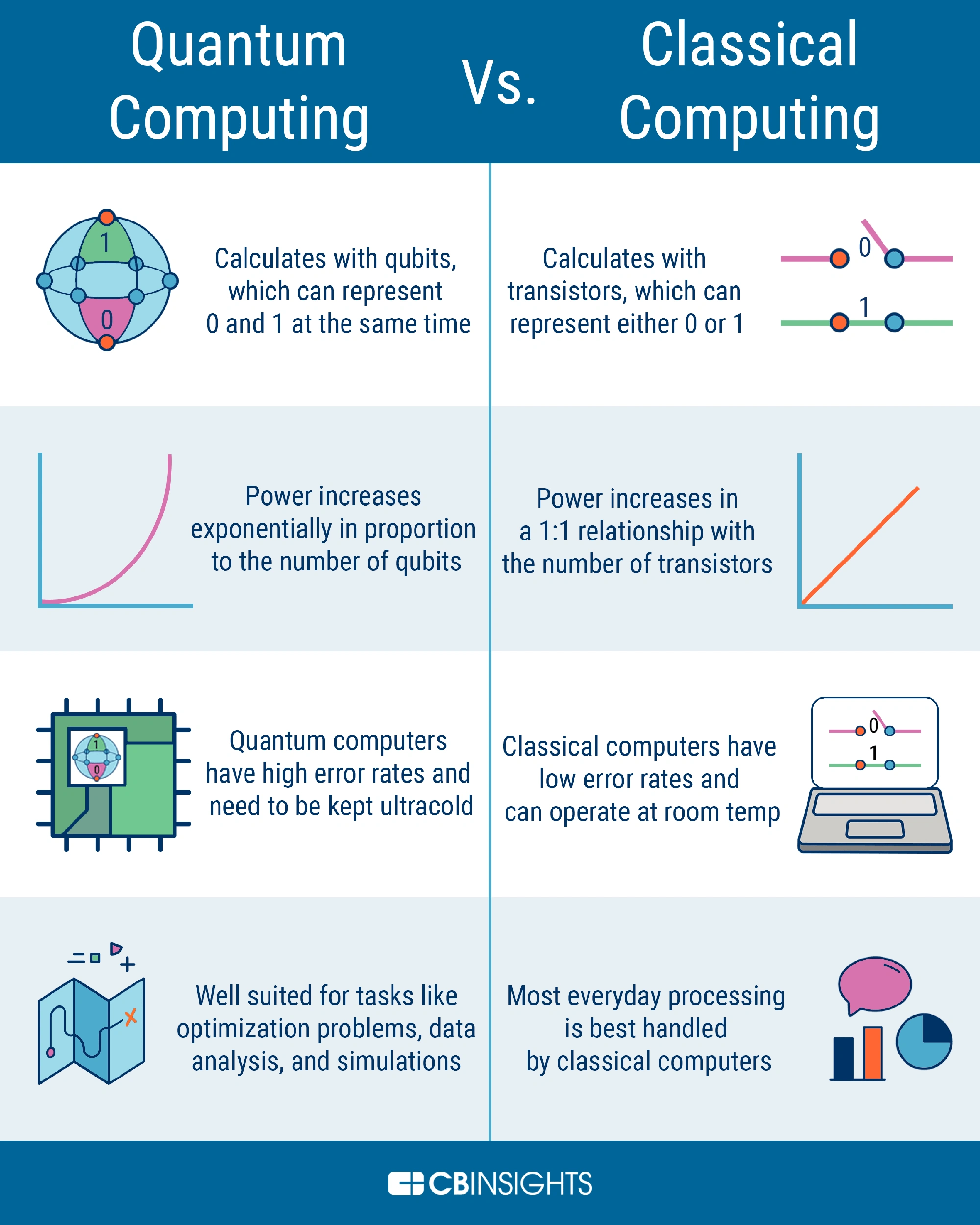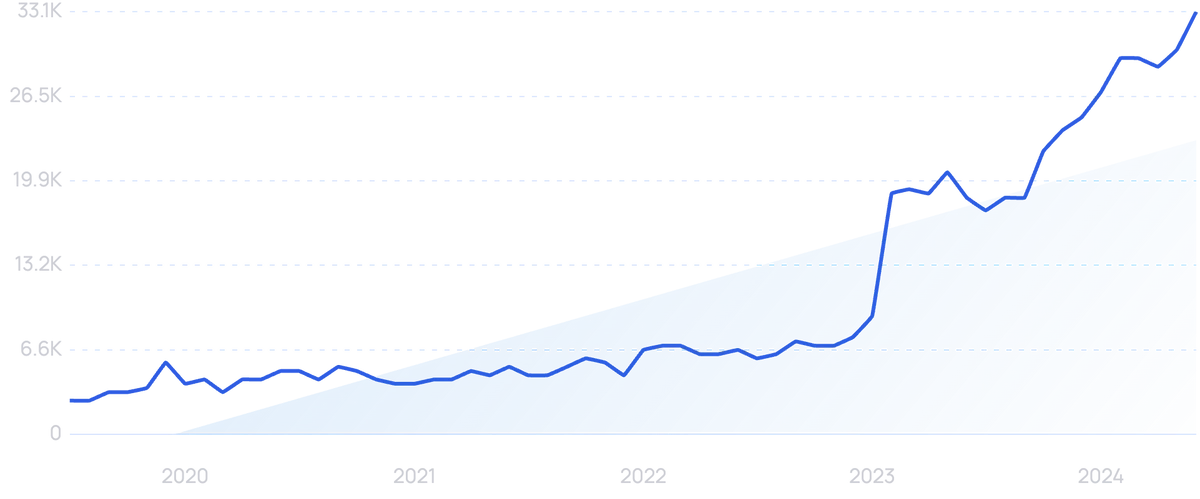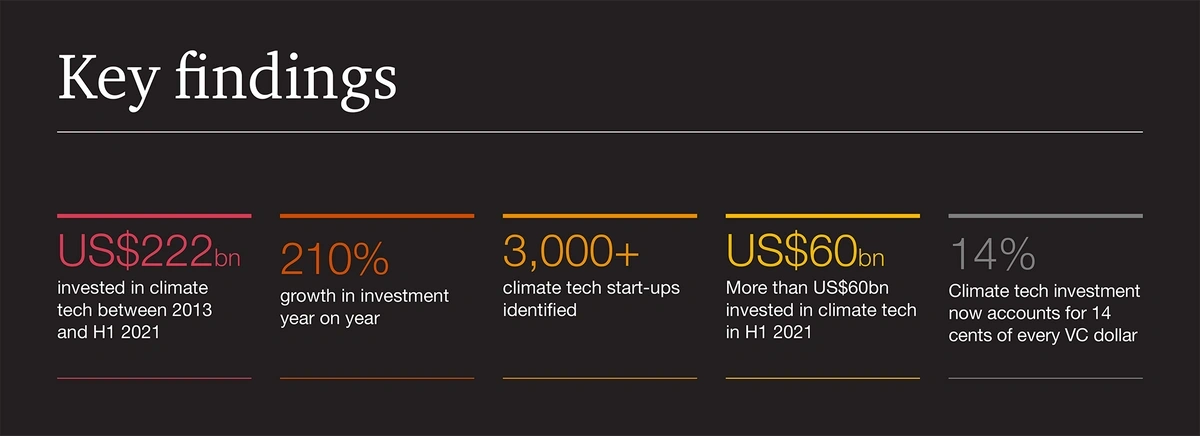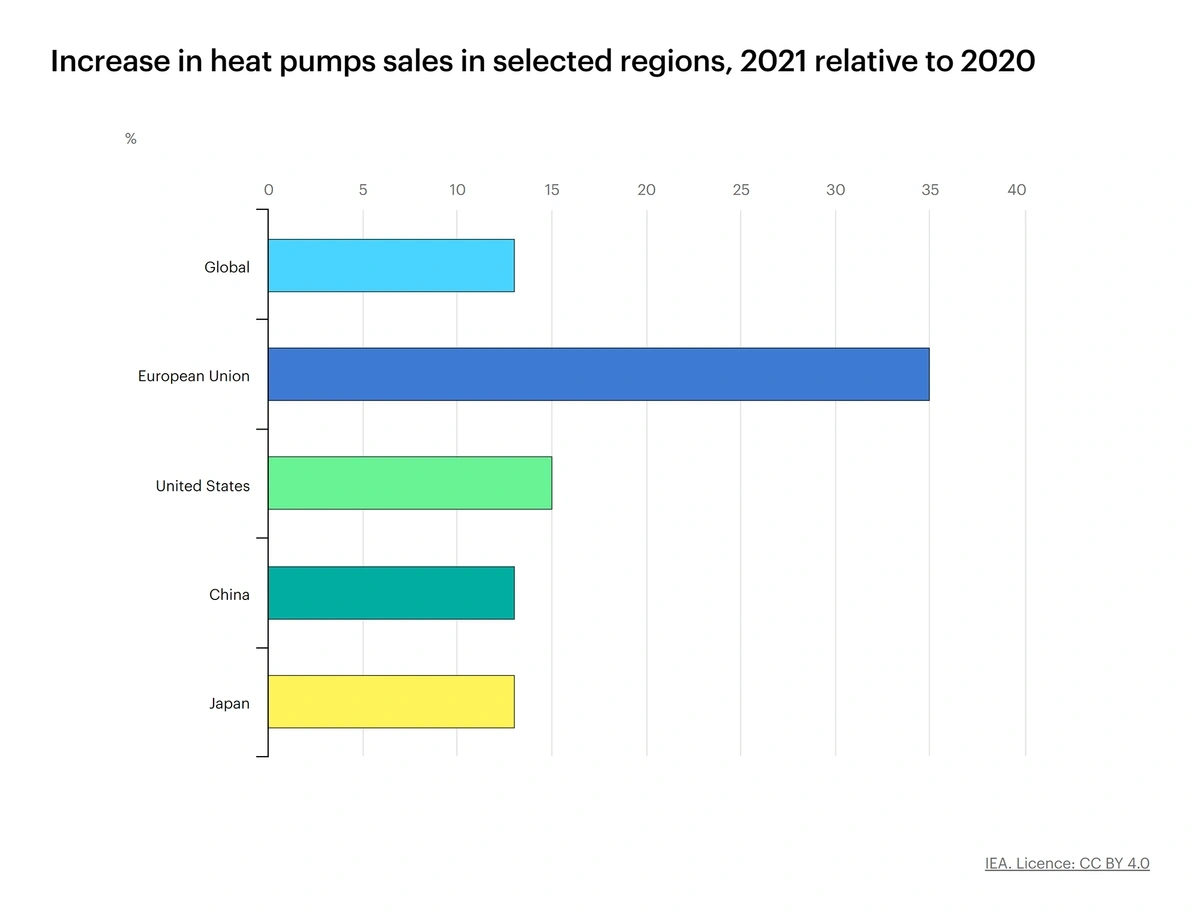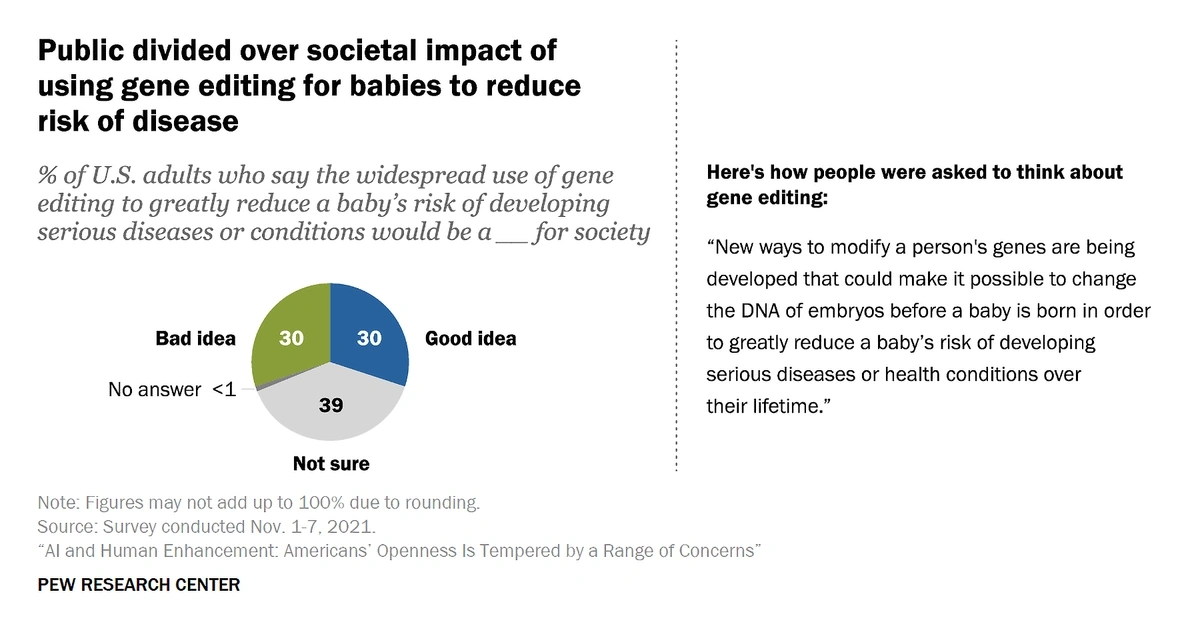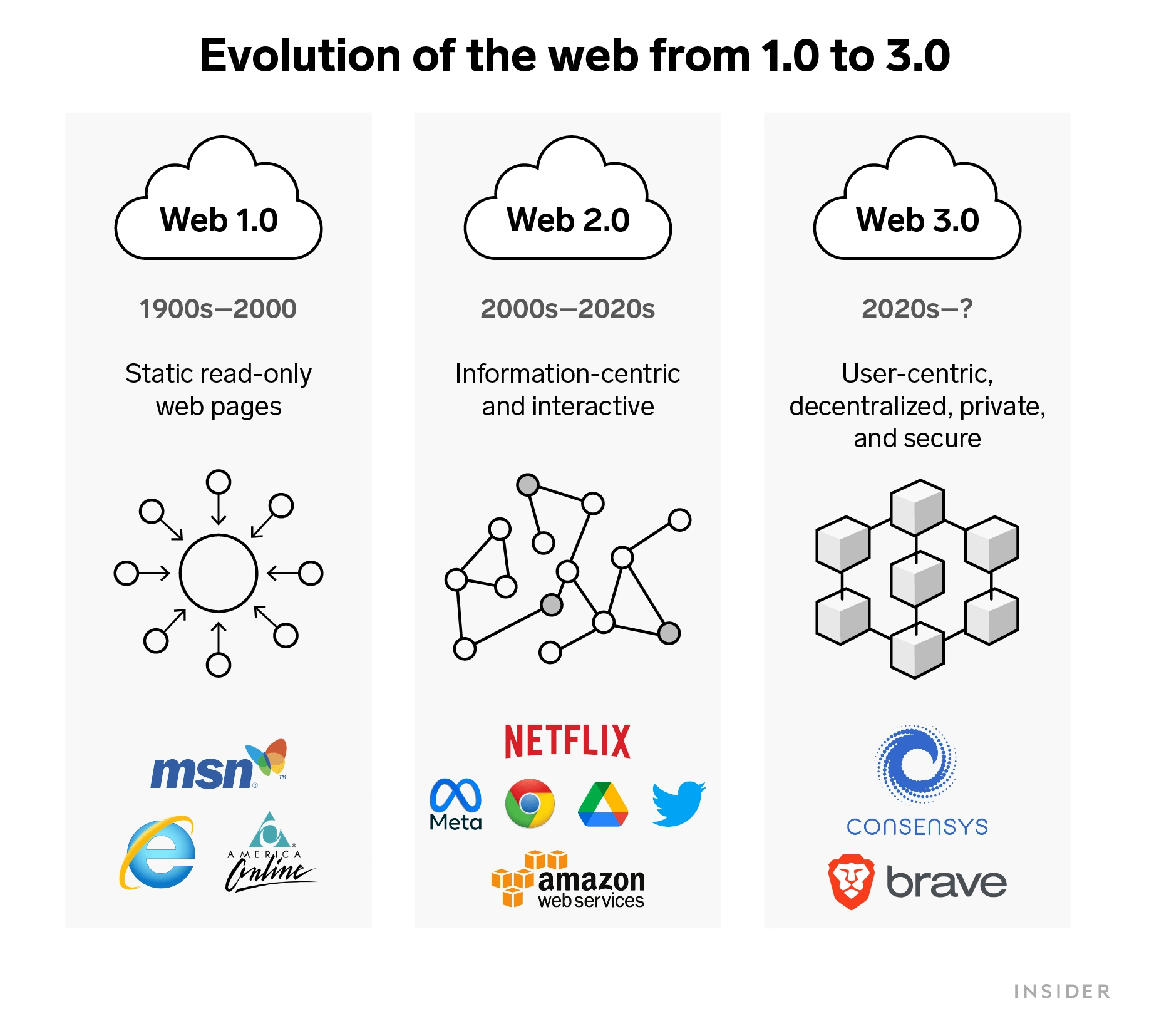
5 Emerging Trends Set to Change the Future (2024-2026)
Technology never stops evolving. This means trends are always shifting.
Today’s computers may soon be superseded by quantum computing. Within the next ten years, web3 may permanently alter the internet as we know it.
But next-gen computers and the evolution of the internet aren’t the only trends of the future that deserve attention.
Here are five of the most important future trends to keep an eye on over the next 2-3 years.
1. Full-scale Quantum Computing
Quantum computing has the potential to create supercharged computers that have up to a trillion times more power than today’s best computers.
As opposed to the binary operation of today’s computers (0s or 1s), quantum computing operates via qubits that can be in multiple states at one time.
Quantum computing utilizes qubits to exponentially grow its processing power.
In the coming years, tech experts predict users will be able to take advantage of this technology in order to solve complex problems that surpass the abilities of today’s computers.
Because quantum computing can handle extremely complex volumes of data, many industries are hoping to capitalize on its ability to analyze variables, assess probability, and run simulations.
For example, simulations utilizing quantum computing have the potential to change the way doctors treat diseases like Alzheimer’s disease, Parkinson’s disease, and Huntington’s disease because these computers will be able to understand the complexity of protein molecules.
In 2021, Cambridge Quantum Computing announced a partnership with Roche in order to develop new treatments for Alzheimer’s disease.
That’s just one example. There are over 100 startups in the quantum computing market in the United States.
McKinsey reports startup funding in the quantum computing space more than doubled between 2020 and 2021, reaching $1.4 billion.
PsiQuantum looks to be one of the most promising quantum technology startups.
Search volume for “PsiQuantum" is up 5,000% in the past 5 years.
They’ve raised $665 million in funding and signed a $22.5 million contract with the Air Force Research Laboratory in late 2022.
The company is looking at an alternate path in quantum computing.
Instead of attempting to develop near-term intermediate-scale quantum computers (NISQ), they are working on fusion-based quantum computing.
Search volume for “NISQ” has been growing – up 6,200% in the past 5 years.
No matter which path they choose, scientists and tech experts have admitted that there’s a long way to go before quantum computing reaches full-scale.
In order to be fully functional and have the capabilities to solve real-world problems, quantum computers need to have 1 million or more qubits.
Today, IBM’s Osprey is the computer that’s closest to that threshold. It has only 433 qubits.
Over the course of the next few years, industry leaders say there will be an all-out race to develop the first full-scale quantum computer.
A full-scale quantum computer could radically alter the world in several ways.
That’s because a computer like that could break through any type of encryption and security protocols, essentially rendering the internet useless.
Between 2019 and 2021, the US invested approximately $3 billion in quantum computing. The UK invested $1.8 billion. However, China invested nearly $11 billion.
The Cloud Security Alliance is sounding the alarm. Their website features a Y2Q countdown clock, which predicts that the arrival of true quantum computing will be April 14, 2030.
2. Widespread Use of Innovative AI Solutions
Widespread adoption of AI is here.
In a 2022 survey from NewVantage Partners, 26% of businesses have fully enabled AI initiatives and 91% are investing in AI.
Deloitte found that 28% of organizations can be considered “transformers” when it comes to AI adoption. These companies have many deployments and high outcomes associated with AI.
Deloitte’s survey mapped out the AI maturity of organizations.
Another 26% of businesses were called “pathseekers” by Deloitte. They have a few deployments and high outcomes from AI initiatives.
Businesses that have a set strategy for AI projects are nearly 2x more likely to achieve their goals than organizations that haven’t laid out a plan, according to Deloitte.
Industry experts say the AI market will grow exponentially, offering innovative and unexpected use cases, in the coming years.
For example, AI experts predict that AI will take over for humans when it comes to driving trucks (by 2027), writing a bestselling novel (by 2049), and performing surgery (by 2053).
The market for generative AI, the form of AI that creates totally new content, is expected to grow at a CAGR of more than 34% through 2030.
Search volume for “generative AI” is growing.
Midjourney is an AI platform that generates images from a text-based user prompt.
It’s been trained via the billions of images that are available on the internet.
Midjourney automatically creates an image based on just a few words.
In the coming years, experts also predict that AI will merge with IoT in a big way.
This is called edge AI, and the market is predicted to swell to nearly $60 billion by 2030.
Search volume for “edge AI” is up more than 1,150% in the past 5 years.
Because AI is able to find trends and patterns in data, it has the potential to vastly improve the performance of IoT devices and enhance the customer experience.
As many large businesses roll out AI projects, smaller businesses are less sure about how to take advantage of the technology.
That’s why the adoption of AI-as-a-Service is growing.
This market is expected to reach $52.8 billion by 2028.
AssemblyAI is an AI-as-a-Service company specializing in transcription and audio intelligence.
Searches for “AssemblyAI” exploded in 2022.
They’ve raised $64 million in funding so far and posted a 3x increase in revenue since the start of 2022.
AssemblyAI’s solution can transcribe audio and video files in mere seconds.
3. Clean Energy to Fight Climate Change
Demand is growing for technology aimed at reducing the impact of climate change.
To that end, investments in climate tech reached record levels in the first half of 2021 as $60 billion was funneled into the industry. That was a 210% increase over 2020.
A report from PwC found that climate tech investments now account for 14 cents of every VC dollar.
In 2022, investment in climate tech remained strong, posting between $15-20 billion each quarter.
Mainspring Energy is developing a new approach to generating clean electricity.
Search volume for “Mainspring Energy” has grown substantially since early 2022.
The company’s Linear Generator produces electricity via two moving parts. There are no oil or complex mechanical systems.
Plus, it can be run by a variety of renewable fuel sources like hydrogen, ammonia, and biogas.
The Linear Generator directly turns motion into electricity.
Mainspring recently announced that they’ll be deploying a Linear Generator at the Yolo County Central Landfill in California.
It will run on biogas that’s produced by the landfill. The electricity it produces will be used on-site and exported to the surrounding electric grid.
The company wrapped up a $290 million Series E funding round in late 2022.
Another important component of clean energy is the heating sector.
Demand for heat pumps is growing because they can reduce dependence on fossil fuels and cut emissions.
This is especially true in European countries where gas prices have risen substantially in recent months and in countries with economic incentives.
The International Energy Agency estimates that approximately 190 million heat pumps were in operation as of 2021, accounting for about 10% of the world’s heating requirements.
Their report also shows that Europe, China, and the United States posted record-high sales of heat pumps in 2021.
Heat pump sales jumped 35% in 2021 in the EU.
That number may increase even more in the United States as a result of economic incentives that were rolled out as part of the Inflation Reduction Act.
As for a solution to the carbon dioxide already trapped in the air, climate tech companies are working on systems that remove it via direct air capture.
Search volume for “direct air capture” is up 214% since 2019.
This technology works via chemical reactions that trap and remove carbon dioxide from the air.
The carbon dioxide can then be injected into underground geologic formations or used in the manufacturing of things like concrete and plastic.
According to the Center for Climate and Energy Solutions, there are currently 26 full-scale direct air capture operations around the world and 34 more are in the process of development.
4. Tech-enabled Health Care
McKinsey predicts health care expenses could top $7 billion in 2025.
McKinsey predicts accelerated innovation and application of technology in the medical field in the coming months.
A large portion of this increase is being driven by an aging population with a wide variety of chronic conditions.
Researchers and leaders in the health IT field are looking for ways to ease this burden.
Gene editing is one way it might happen.
The most well-known approach to gene editing is through CRISPR-Cas9.
In simple terms, this technology allows scientists to cut the DNA at a specific spot and add or remove DNA at that spot.
So far, the medical field reports gene editing may hold promise in correcting Huntington’s disease, cancers, sickle cell disease, HIV, cystic fibrosis, and a few others.
However, this trend is being met with a few hurdles.
Even though this technology has become cheaper in recent years, it still costs up to $2 million.
And, there are a host of ethical concerns associated with gene therapy.
In a survey from the Pew Research Center, only 30% of people say using the technology to prevent babies from developing a serious disease is a good idea. An equal amount say it’s a bad idea and 39% are unsure.
Nearly 40% of people are unsure about whether or not they support using gene editing in embryos.
The advent of 3D bioprinting is another tech-enabled solution that may bring about changes to medical treatments in the coming years.
This is a type of additive manufacturing that prints with living cells and biomaterials.
Search volume for “additive manufacturing” shows growth.
One of the clearest potential applications of this kind of technology is creating artificial organs.
It could also prove to be a valuable part of drug testing because the bioprinted tissue could serve as a stand-in for human subjects during testing phases.
Researchers at the NIH successfully bioprinted eye tissue in late 2022.
NIH researchers bioprinted eye tissue in order to study degenerative retinal diseases.
A leading biomedical expert has predicted that a bioprinted heart may be available for animal testing within the next 12 years.
5. Growing Interest and Funding for Web3
The third generation of the internet is currently in development. Industry experts predict it will be fully released in the next five to ten years.
Search volume for “web3” is up nearly 1,083%.
Decentralization and improved user utility are two of the main goals of this new evolution.
With web3, information would be stored in multiple locations instead of on a single server like it is now.
This takes the control away from tech giants and gives more power to creators.
Web3 aims to put decision-making power in the hands of users.
Applications would run via blockchain and decentralized peer-to-peer networks that are trustless and permissionless.
In addition, users would have pseudonymity because their personal data would be stored in a crypto wallet. Users would control their own data, deciding whether or not they want to monetize it.
Interest in web3 is already taking off among consumer groups.
In a McKinsey survey of active online users, 20% of people between 25 and 44 years old reported owning digital assets.
In addition, more than 60% of them have made payments using digital assets.
Enterprises are preparing for web3, too.
More than 60% of businesses plan to invest in web3 in the next two years according to KPMG.
A survey from KPMG showed that 37% of organizations plan to invest in both web3 and the metaverse in the next two years.
One key way in which web3 could influence businesses is the collection of data.
Because users would retain ownership of their data, data collection becomes a two-way street.
Businesses would eliminate the middleman in data collection and could dramatically increase the reliability of their customer data.
Consumers would become more like partners to brands and develop a new kind of super-loyalty, according to PwC.
Despite cryptocurrency market challenges in recent months, VC money is still flowing into web3 startups.
Deal Box recently announced it would invest $125 million into startups.
They’ve already invested in Forward-Edge AI, Total Network Services, and Rypplzz.
Syky is a luxury fashion startup focused on digital fashion and web3.
Syky hopes to create a next-generation fashion platform on web3.
Since its launch in November 2022, the company has raised $9.5 million in a series A funding round and is preparing to release 987 NFTs in early 2023.
Conclusion
That wraps up our list of the top five emerging trends to watch in 2024 and beyond.
New advances in technology are poised to disrupt the healthcare industry and energy sector. Time is of the essence when it comes to climate change solutions and clean energy options. However, many people are leery of next-generation developments in the medical field.
These emerging trends are also set to give businesses an entirely new set of strategies when it comes to increasing efficiency and improving the decision-making process. But it remains to be seen which tech platforms will receive the most buy-in in the coming years.
Stop Guessing, Start Growing 🚀
Use real-time topic data to create content that resonates and brings results.
Exploding Topics is owned by Semrush. Our mission is to provide accurate data and expert insights on emerging trends. Unless otherwise noted, this page’s content was written by either an employee or a paid contractor of Semrush Inc.
Share
Newsletter Signup
By clicking “Subscribe” you agree to Semrush Privacy Policy and consent to Semrush using your contact data for newsletter purposes
Written By


Josh is the Co-Founder and CTO of Exploding Topics. Josh has led Exploding Topics product development from the first line of co... Read more

